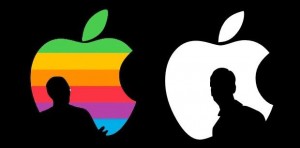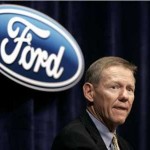Posts Tagged ‘Leaders’

Widely considered as a controversial genius and a charismatic leader, Steve Jobs has served as chairman and CEO of Apple for 14 years and he is credited for the global success of the company. The decease of Steve Jobs on October 5, 2011 because of cancer implications resulted in grievances for millions of people around the globe, at the same time casting concerns for the future of Apple Inc. Although, a long-term Apple executive with impressive track record – Tim Cook has been named apple CEO several months before the decease of Steve Jobs, nevertheless, there are concerns about the sustainability of Apple’s innovative corporate culture, as this culture had been closely associated with the former CEO. Apple Organisational Culture on Steve Jobs Era Late Apple chairman and CEO, Steve Jobs is widely perceived as unconventional leader who was able to rally various stakeholders of the company for his vision and at the same time “demanded excellence from his staff and was known for his blunt delivery of criticism” (McInerney, 2011). According to Harrison’s Model of Culture (1972) Apple organisational culture when Steve Jobs was in charge can be classified as a power culture. Accordingly, Steve Jobs had concentrated most of the decision making powers at his hands, constantly challenging subordinates for better performance, and criticising employees blatantly and undiplomatically if their performances did not meet his expectations (Arneson, 2011). Moreover, described as “antithesis of servant leadership model” (Katzenbach, 2012), Steve Jobs was famous for pressurising teams and individuals to better performance and creating a corporate culture of high level of performance where A list employees would thrive, however B list employees, comprising the majority of workforce, would be subjected to unnecessary level of stress. According to Harrison’s Model of Culture (1972) the power culture has both advantages, as well…

Introducing change and improvements regularly in various business processes has become one of the basic conditions of survival in a competitive global marketplace of today. However, even when the importance and necessity of change is understood by many its implementation in practice is associated with a set of substantial challenges caused by a range of reasons such as loss of power, fear of unknown, job security, economic factors etc. (Zimmerman, 2011). This article analyses and evaluates diversification strategies implemented in Ford Motor Company by its President and Chief Executive Officer (CEO) Alan Mulally. Ford Motor Company is global auto manufacturer that employs about 164,000 members of workforce in about 70 plants worldwide (Annual Report, 2011). The article covers three main themes: main drivers of change in Ford, key changes introduced by Alan Mulally, and an analysis of change management style of Alan Mulally. Main Drivers of Change in Ford Motor Company By 2006 when Alan Mulally was appointed Ford President and CEO there were a set of stark drivers of change. Specifically, at the time among other issues “Fords major problems was consensus management in the process of designing automobiles” (Herbold, 2011). For example, Ford Fusion sedan introduced in the same year was not equipped with navigation and side air bags, despite the fact that most of the competitor cars of the same class were equipped with such accessories. Analysis conducted by Mulally has identified that the main reason behind such a practice was high level of involvement of finance department over the design and functionality of cars (Fuller, 2011). In other words, in order to bring down the costs of manufacturing, finance department have been asking engineers and designers to be engaging in excessive cost saving when designing cars and equipping them with technological gadgets and functionalities.…

The emergence of contingency theories of leadership as a new major leadership paradigm is associated with the recognition in the late 1960s that no one best leadership style was available that was equally effective in all situations (Fitzimons et al., 2011). A clear distinction has to be made between leadership theories and models in order to avoid misunderstandings. As Lussier and Achua (2011) inform, theories of leadership is an explanation of a specific aspect of the practice of leadership, whereas leadership model involves an example of implementation of the theory in a particular situation. Contingency theories of leadership “attempt to explain the appropriate leadership style based on the leader, followers and situation” (Lussier and Achua, 2010, p.152) Contingency leadership model can be described as “a model used to determine of leadership style is task- or relationship-oriented and if the situation matches the style” (Lussier, 2011, p.338). Three variables of contingency theories of leadership are leader, followers, and situation, and the basic idea behind contingency theories of leadership is that the level of effectiveness of a leader depends on how well the style of the leader fits the organisational context. Contingency theories of leadership focus on specific situational factors such as people, task, strategies, etc. Fiedler’s contingency theory, path-goal theory and situational leadership theories belong to contingency theories of leadership. The case for the relevance of contingency theories of leadership to today’s business world can be effectively illustrated by referring to the story of Indra K. Nooyi, Chairman and Chief Executive Officer of PepsiCo – one of the leading global food and beverage company. Growing up in Chennai, India, obtaining BS degree from Madras Christina College, and an Master’s Degree from Yale University, USA, being engaged in corporate strategy and marketing fields with Motorola, Asea Brown Bovri, and PepsiCo, Ms. Nooyi…

The level of effectiveness of people working in the position of Chief Executive Officer (CEO) is important not only for the well-being of employees working for the same company, but to the state of the national economy in general. Therefore, it has to be insured that only people with relevant skills, character, experience and knowledge are employed in such a responsible position. This first part of the report discusses working conditions, rewards and main tasks of CEOs, as well as briefly analyses qualifications, personal characteristics and skills CEOs must posses. Moreover, CEO person specification is also provided in the first part of the report. CEO Working Conditions, Rewards and Main Tasks CEO’s working conditions are perceived to be posh and luxurious with fashionable and highly expensive office furniture, usually grandiose design and latest technological appliances. However, Burke and McDonald (2010) warn not to be mislead with the perception of comfort associated with the role of CEO and mention such elements as increasingly long working hours, and huge amount of stress to be associated with the role. CEO’s usually receive remuneration packages that are highly attractive and include basic pay, usually in six digit figured, bonuses and a wide range of other perks, such as company cars, free insurance, and in some instances even free homes. Moreover, even when CEOs have to leave their position due to some reasons they are offered a considerable sum of payment, known as a golden parachute. According to Canals (2010) CEO’s main tasks can be summarised to the following points: a) Implementing the mission and values of company; b) Leadership development c) Allocating resources in an efficient manner d) Maximising operational efficiency e) Implementing operational design Qualifications for CEO There is no specific formal qualification requirements for individuals aspiring to the corporate executive…

Background study of the case (abstract) The formulation of a winning modern strategy and its effective implementation can result in success for profit oriented businesses, non-profit organizations and even political parties alike. The clear proof is the success of British labour party in general elections of 1997 after long years being out of power due to “old way thinking”, non-innovative approach and conflicts of interests within the party itself. All of these were changed once the future youngest prime minister since 1812 Tony Blair became the leader of the party in 1994. With the appointment of the young party leader many things changed within the party. One of the first things Tony Blair did as the party leader was to formulate a clear strategy and to adapt a business-like approach to lead the Labour party. He appointed competent, open-minded people in key positions, recognized and addressed the interests of all stakeholders and identified Labour party’s customer segments tasking into account unique interests of each segment group. All of these strategic decisions provided success for the Labour party. Introduction The present work aims to analyse the successful strategy which was adopted and implemented by Labour party under the leadership of Tony Blair with assistance from Tom Sawyer and other members of the team. Background of the case (abstract) provided at the beginning of the work to familiarize the reader with the topic of the case and to provide general background information in brief which was followed by introduction to the work. Analysis of the case is also undertaken in more detail to review key strategic decisions made by Labour party leaders, motives behind them, barriers for their implementations and outcomes after implementing those decision. This is followed by critical view and answer to questions based on the model.. Explanation is…
